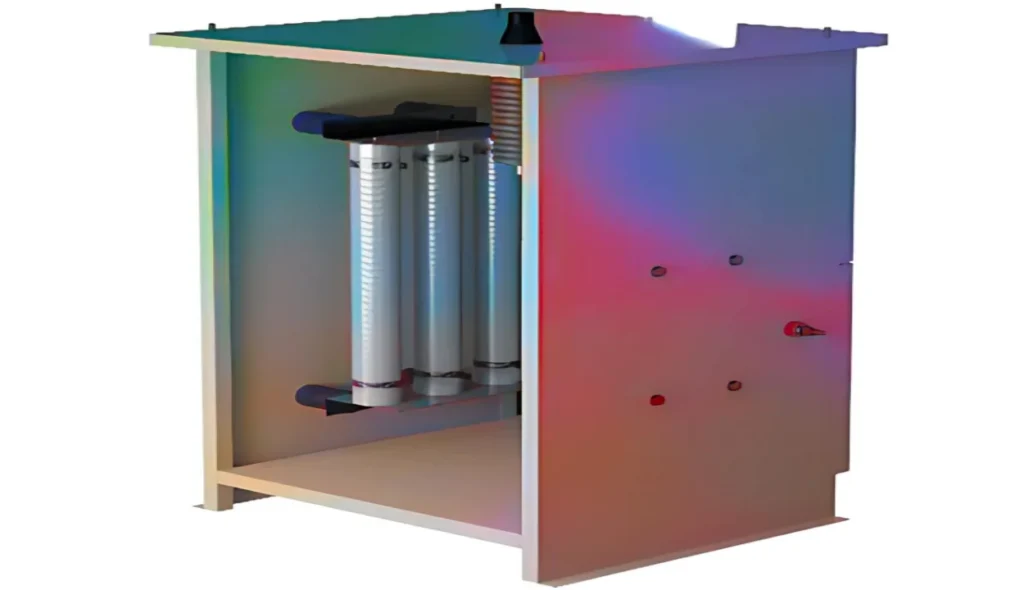Understanding NTC thermistors
When working with NTC thermistors, I’ve seen how their resistance behaves uniquely—it decreases as temperature increases, making them incredibly useful as sensors. Their high sensitivity allows for precise measurement of heat changes, typically within a range of −55°C to 200°C. Unlike RTDs or silistors, they have a much greater coefficient, making them a preferred choice in various devices. However, their nonlinearity poses a major challenge in traditional analog circuits, where accurately measuring temperature requires complex adjustments.
With the development of digital technology, the problem of solving this relationship has been addressed by enabling precise computation. By interpolating lookup tables or using equations, thermistors now provide more accurate values for temperature control. Their current-limiting properties make them vital for protecting electrical circuits from surges. The rapid adoption of digital solutions has significantly improved how we integrate NTC thermistors in real-world applications. Thanks to computational techniques, even complex problems involving temperature curves can be managed efficiently today.
NTC Thermistor Definition
An NTC thermistor is a thermally sensitive resistor that exhibits a large, predictable decrease in resistance as the core temperature increases. This precise behavior makes it reliable for operating within a defined temperature range.
NTC thermistor diagram

NTC thermistor symbol

Construction and Properties of NTC Thermistors
NTC thermistors are made using materials like platinum, nickel, cobalt, iron, and silicon oxides, either as pure elements or blended into ceramics and polymers. Their fabrication process varies, with thermistors being classified into three groups, depending on the production process used. You can also read variable resistors.
Bead Thermistors
Bead thermistors are NTC sensors made from ceramic material with platinum alloy lead wires that are sintered into the body. They are fragile but offer fast response times and better stability for higher temperatures. Their sizes range from 0.075 mm to 5 mm in diameter, making them suitable for precise measurement and operation. To protect them from mechanical damage, they are often sealed in glass, which also helps improve durability during assembly. These thermistors are common in disk and chip forms, offering reliability for various applications.
Disk and Chip Thermistors
Disk thermistors are made by pressing a blend of oxide powders into a round die and then sintering at high temperatures. They have metalized surface contacts, making them larger but with slower reaction times than bead thermistors. Due to their higher dissipation constant, they can handle currents better and withstand more power. Chips are fabricated using a casting process, where a thick slurry of material is dried, cut into shape, and processed into thermistors.
Their typical size range is 0.25 mm to 25 mm in diameter, ensuring they work efficiently across various temperatures. Their power dissipation is proportional to the square of the current, making them effective for precise temperature regulation.
Glass Encapsulated NTC Thermistors
Glass-encapsulated NTC thermistors are sealed inside an airtight container to withstand harsh environmental conditions. They are designed for use in printed circuit board mounting, where ruggedness is a must for reliability. Encapsulating the bead thermistor in glass enhances stability and protects it from external damage. These sensors operate at temperatures above 150°C and come in a typical size range of 0.4 mm to 10 mm in diameter. Hermetically sealing these resistors ensures long-term performance in demanding applications.

Characteristics of NTC thermistors
NTC thermistors are made from ceramics or polymers, unlike RTDs, which use metals. Their resistance changes with temperature, leading to different responses and performance characteristics. The choice of materials in their manufacture directly affects the results in various applications, making them highly adaptable detectors.
Temperature Response
NTC thermistors are highly sensitive to temperature changes, making them suitable for applications requiring precise readings. They typically function within a range of −55°C to 200°C, but special families are designed to work above 150°C or even approaching absolute zero (−273.15°C). Their temperature sensitivity is expressed as a percentage change per degree C or K, depending on the materials and production process.
The specifics of each thermistor determine its typical values, with sensitivity ranging from -3% to -6% per degree. This property allows them to be used in various applications, where maintaining accuracy across different temperature conditions is essential. Depending on the environment, selecting the right thermistor ensures stable performance in extreme temperature fluctuations.
Comparison to Other Temperature Sensors
NTC thermistors are smaller in size than RTDs and thermocouples, offering a faster response and greater sensitivity at lower temperatures. While they provide good precision and stability, they do not withstand high temperatures like thermocouples, which function at up to 600°C. NTC thermistors require less additional circuitry, reducing the need for amplifiers, signal conditioning, and translators, making them a cost-effective choice.
Unlike thermocouples, which always need external circuits for accurate dealing with temperature changes, NTC thermistors work with fewer circuits. Their accuracy is similar to RTDs, but they provide a lower-cost alternative for many applications. Due to their shock and vibration resistance, they are used in environments where stability and reliability matter most. The lack of extra level adjustments further simplifies integration into various systems.
Self-Heating Effect
The self-heating phenomenon occurs when an NTC thermistor allows current to pass through, causing heat to be generated in its core. Since the thermistor acts as a resistor, it dissipates power, which affects the temperature coefficient and impacts precision in measurements. The extent of this effect depends on factors like the total area of the thermistor and the amount of current flowing through it.
The environment, such as whether the thermistor is in liquid or gas, also influences its resistance. This characteristic is often used in detectors for storage tanks, where the presence of a flowing liquid changes the thermistor’s response. By analyzing these temperature variations, NTC sensors help maintain accurate measurements in different conditions.
Heat Capacity
The heat capacity of an NTC thermistor defines how much heat is required to increase its temperature by 1°C. It is usually expressed in mJ/°C and plays a precise role in controlling the response speed of the sensor. This is especially important when using the thermistor as an inrush-current limiting device, as it helps regulate power surges. Understanding this capacity ensures efficient operation in temperature-sensitive applications.
Curve Selection and Calculation
Choosing the right thermistor requires careful selection of key factors, including the resistance-temperature curve, tolerances, and dissipation constant. Since the relationship between resistance and temperature is highly nonlinear, specific approximations must be utilized in practical system designs.
The R-T curve and Thermal Time Constant play an important role in ensuring accurate readings. Engineers must consider the process carefully to get precise value adjustments for real-world applications.
First-Order Approximation
The first-order approximation is the simplest way to estimate how resistance changes with temperature. It uses a negative coefficient (k) to calculate the ΔR based on the ΔT, but it is only valid in a narrow range.
Since k remains nearly constant, this method works only for specific conditions where the difference in temperature is small. Outside this range, the resulting change in resistance may not be accurate across the whole system.
Choosing the Right Approximation
The choice of an approximation depends on the requirements of the application and available computing power. A first-order method may be enough, but for greater tolerance, the Steinhart-Hart equation is often used. If even that doesn’t fulfill accuracy needs, the thermistor must be calibrated by taking multiple measurements and storing them in a lookup table. This process involves creating a large number of precise temperature readings and adjusting the formula accordingly.
Typical Applications
Common Uses of NTC Thermistors
NTC thermistors are widely exploited in a broad spectrum of applications, including temperature monitoring and current limiting in power supply circuits. They help detect the presence or absence of liquid in systems, making them essential sensors in industrial and medical fields. Thermistors are also used to measure, control, and compensate for temperature in automotive applications. These devices are divided into three groups, depending on the electrical characteristics used for specific functions.
Resistance-Temperature Characteristic
The resistance-temperature characteristic of an NTC thermistor is widely used for temperature measurement, control, and compensation. In some applications, the sensor operates in a zero-power condition, ensuring that the current remains low to avoid heating the probe. This method is often used when the temperature of the NTC thermistor needs to be related to a physical phenomenon. These systems require precise handling to ensure possible accuracy in various environments.
Current-Time Characteristic
The current-time characteristic of an NTC thermistor is used in applications like inrush current limiting, surge suppression, and time delay systems. It relies on the current passing through the thermistor, causing heating that changes its resistance. This effect helps trigger circuit protection mechanisms depending on the heat capacity and dissipation constant. These characteristics make it useful in various circuit-related safety measures.
Voltage-Current Characteristic
The voltage-current characteristic of a thermistor is used in applications where changes in environmental conditions affect the operating point in a circuit. This can help with current limiting, temperature compensation, or measurements, depending on the needs of the system. Variations in the curve influence the results, making it essential for precise control in sensitive electronics.
Conclusion
NTC thermistors are highly versatile components with a wide range of applications in temperature measurement, control, compensation, and current limiting. Their characteristics, including resistance-temperature, current-time, and voltage-current relationships, make them essential for precise circuit operation.
By understanding their heat capacity, self-heating effect, and approximations, engineers can optimize thermistor use in automotive, industrial, and power supply systems. Their ability to respond to environmental changes ensures reliable performance in demanding applications.



